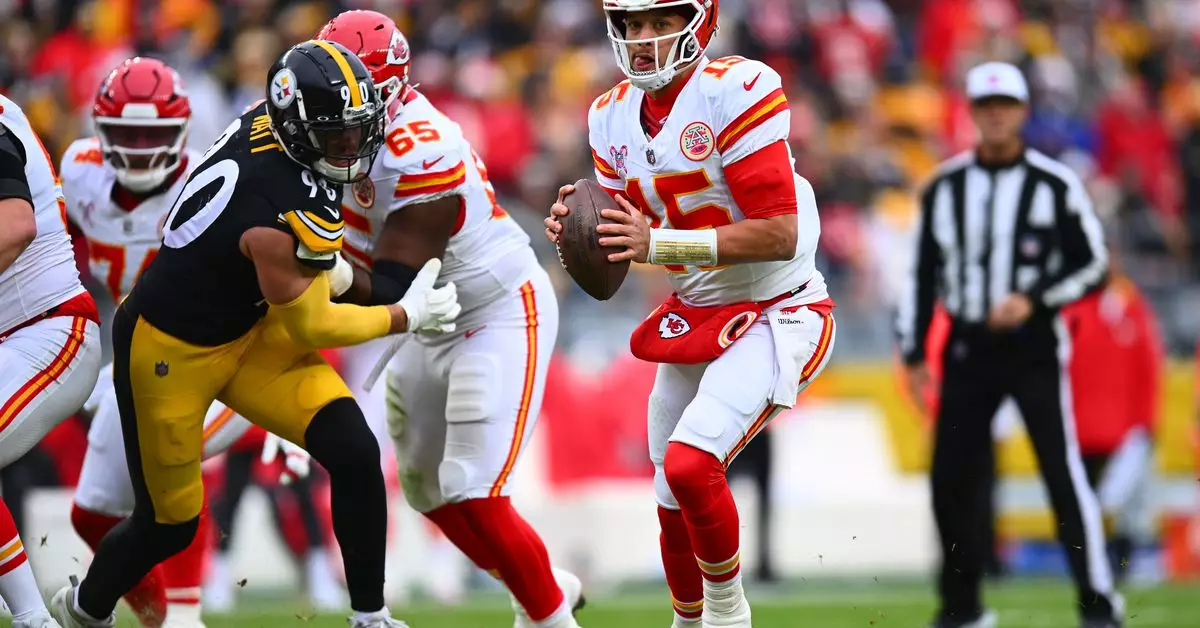On Christmas Day, Netflix made a remarkable entry into sports broadcasting, reporting an impressive audience for its live streaming of NFL games. The matchup between the Kansas City Chiefs and the Pittsburgh Steelers attracted a staggering 24.1 million average minute audience (AMA), while the game featuring the Houston Texans and the Baltimore Ravens reached an even higher 24.3 million. With nearly 65 million total viewers across both games, it marked a significant milestone, with Nielsen ratings indicating these were the most-streamed NFL games in U.S. history. This substantial viewership not only showcases the growing popularity of streaming services but also reflects a transformative moment in how audiences consume live sports.
Despite facing challenges with its infrastructure during a previous high-profile boxing match between Mike Tyson and Jake Paul, Netflix managed to deliver a relatively seamless experience during the NFL broadcasts. By handling the viewing demands of over 60 million households for the games, Netflix demonstrated its commitment to improvement and adaptability in live event streaming. Alongside the thrilling football action, the platform also showcased star-studded performances, notably from Mariah Carey and Beyoncé, enhancing the overall appeal of the viewing experience. The success of these events suggests that Netflix is increasingly becoming a formidable player in live sports broadcasting.
Expansion of Content Offerings
In response to the overwhelming interest, Netflix is set to capitalize on its viewership by releasing a standalone replay of the highly anticipated “Beyoncé Bowl” halftime performance, which attracted 27 million live viewers. This strategic move aligns with Netflix’s objective to foster a diverse array of content that goes beyond standard series and films, enticing viewers who crave unique spectacles. Such content diversification could be pivotal in retaining subscriber interest and attracting new users, making Netflix a key contender in the realm of sports entertainment.
The NFL’s decision to maintain its Christmas Day games on Netflix for the next two years signifies a promising partnership between traditional sports organizations and modern streaming platforms. This synergy not only caters to the evolving viewing preferences of audiences but also invites competition that could enrich the sports broadcasting landscape. Interestingly, the NBA, which typically enjoys a monopoly on the holiday scheduling, reported its most-watched Christmas Day in five years, averaging 5.25 million viewers per game. This highlights the challenge Netflix poses, presenting fans with alternative options that might tempt them away from conventional broadcasts.
The successful integration of NFL games into Netflix’s broadcasting roster exemplifies the ongoing evolution of how sports are consumed. As viewer preferences shift towards digital platforms, the emphasis on live streaming experiences will only intensify. Both Netflix and traditional sporting leagues will likely need to adapt further in this competitive environment, aiming to enhance viewer engagement and retention amidst evolving fan expectations. The evidence is clear: Christmas Day 2023 was not just another holiday but a significant chapter in the story of live-streamed sports, poised to reshape the future of broadcast viewing.


Leave a Reply